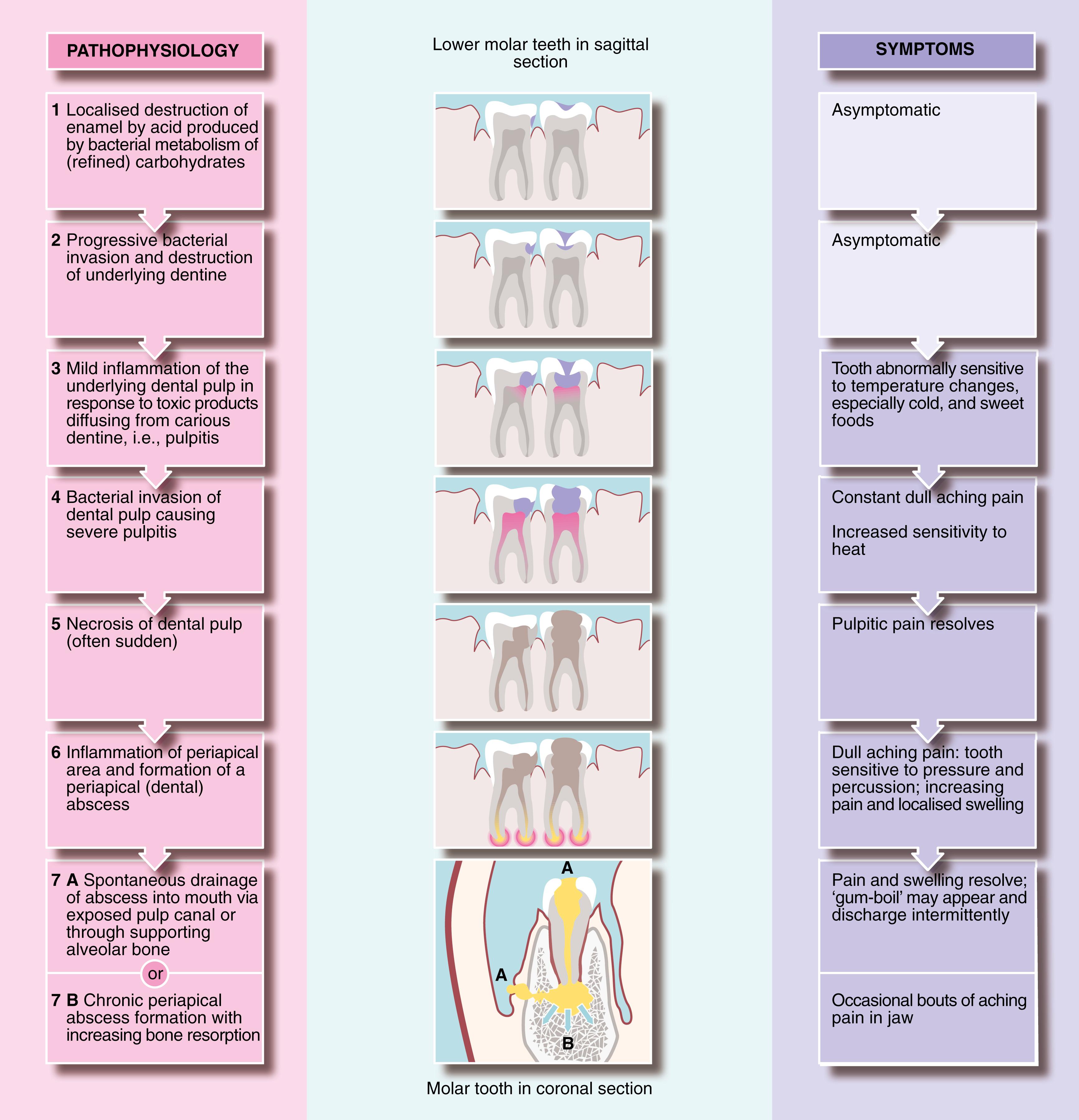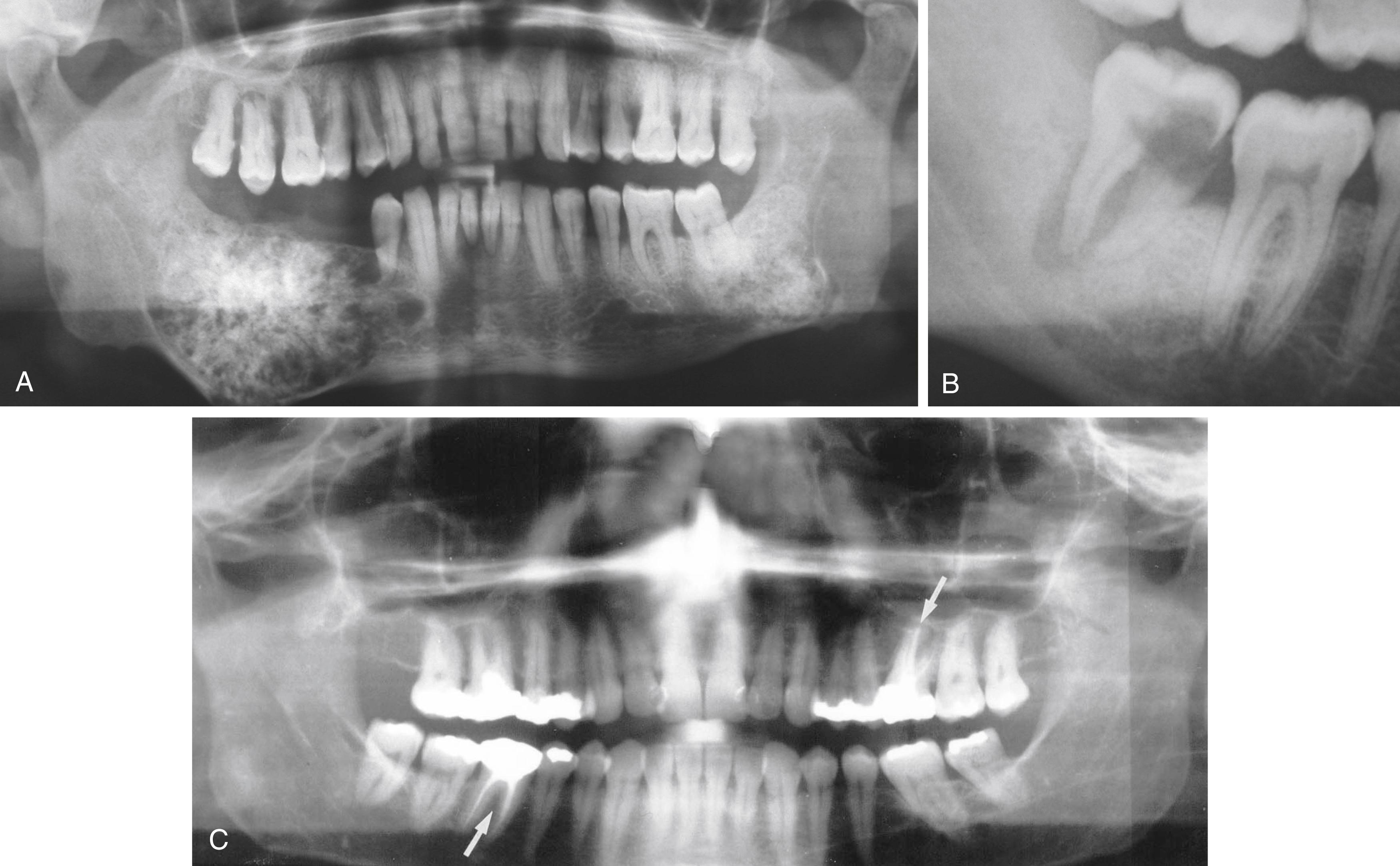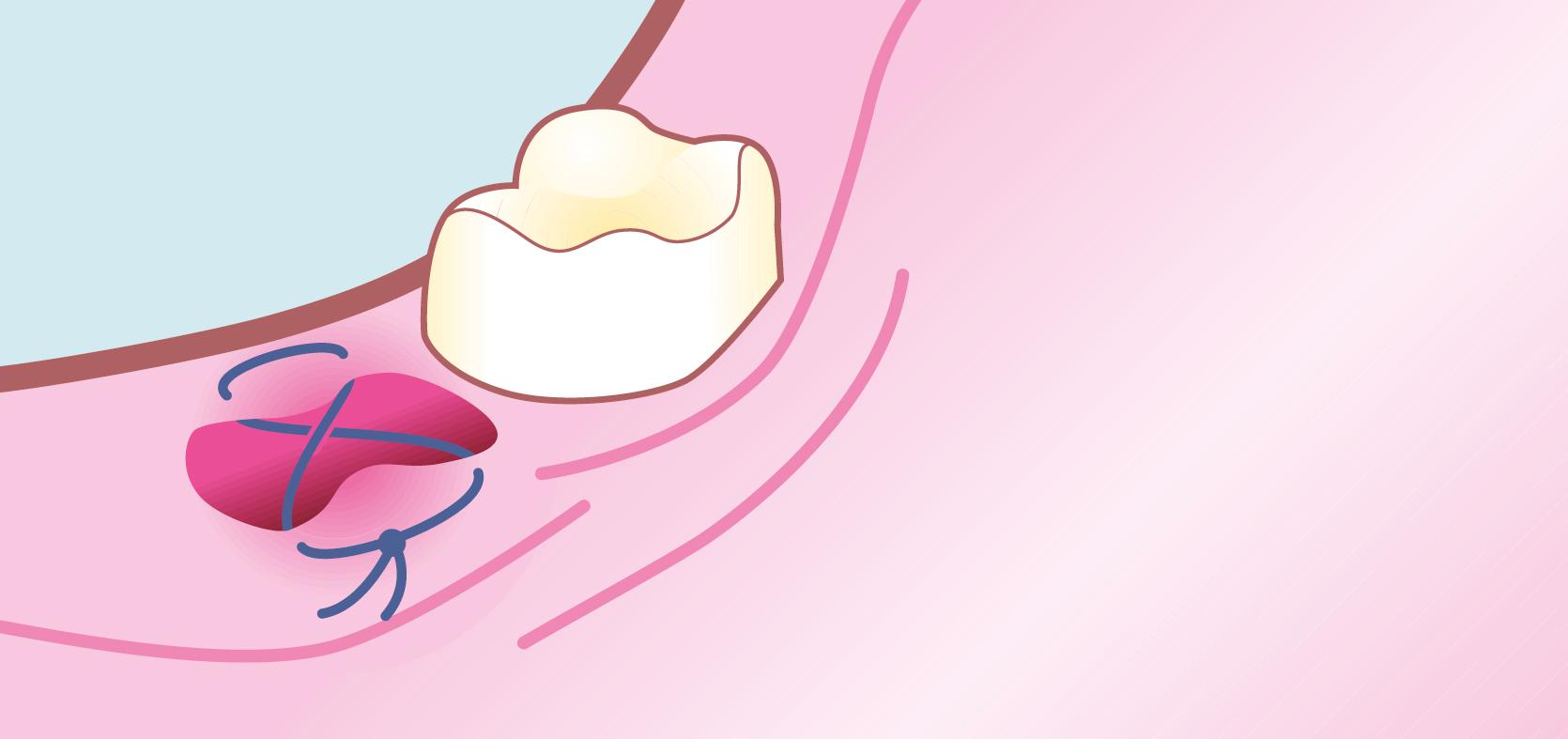Physical Address
304 North Cardinal St.
Dorchester Center, MA 02124
The mouth should be examined in a systematic way after removal of dentures, taking note of the condition of the teeth and oral soft tissues. Teeth are straightforward to identify: they are either upper or lower and then left or right; they are then numbered from the midline backwards from 1 to 8. In this way, they can then be used as signposts to oral lesions, for example, ‘the cheek lining adjacent to the upper left fifth tooth’.
The main oral disorders are dental caries (tooth decay) and its sequelae, inflammation of the gums and supporting bone ( periodontal disease ), tumours and premalignant conditions of mucosa (leukoplakia and squamous carcinoma) and disorders of the minor salivary glands , such as retention cysts. The main symptoms and signs are summarised in Box 48.1 . Salivary gland disorders are covered in Chapter 47 .
Pain —dental caries and its sequelae, acute gingival inflammation, such as pericoronitis and Vincent infection (acute ulcerative gingivitis)
Bleeding —chronic gingival inflammation
Halitosis —dental caries and chronic periodontal disease
White lesions —epithelial dysplasia (leukoplakia), lichen planus and candidal infection
Oral ulceration —aphthous ulcers, squamous carcinoma, retained tooth roots, chronic tooth or denture trauma, and rare epidermal disorders (e.g., lichen planus or Behçet syndrome)
Discharging sinuses —periapical tooth abscess (‘gum boil’)
Bony lumps in the jaws —fibrous dysplasia, tumours, cysts, ectopic teeth
Salivary glands and duct-related lumps —retention cysts, submandibular duct stones, tumours
In developed countries, dental caries (tooth decay) is a common bacterial disorder. First, the surface enamel of the tooth is breached by the demineralising action of lactic acid generated by commensal oral bacteria, as a by-product of carbohydrate metabolism, particularly of refined sugars. The most vulnerable sites for decay are just below the contact points of adjacent tooth crowns and the pits and fissures on the biting (occlusal) surface of molars and premolars. These sites are relatively inaccessible to natural oral cleansing mechanisms and to tooth brushing.
Once enamel is breached, proteolytic bacteria enter the less calcified dentine beneath and cause progressive destruction. The enamel remains intact until the dentine is undermined and the enamel fractures. Thus dental caries may be well advanced but invisible, even to a dental mirror and probe, and detectable only on x-ray. The decay process is asymptomatic until close enough to the tooth pulp to cause inflammation and pain. Eventually, there is swelling of the pulp leading to autoinfarction and pulpal death. The pathological process and corresponding symptoms are outlined in Fig. 48.1 .

Once the pulp is necrotic, bacteria move into the space and multiply, then spread to the periapical region forming an apical abscess . This leads to painful oral and facial swelling, and if untreated, eventually drains into the mouth or occasionally onto the face, as a discharging sinus. However, the initiating cause, the necrotic pulp, remains, so a chronic abscess flares up intermittently or continues with a persistent discharge.
The pain of dental caries is usually well recognised as a ‘toothache’, but is often poorly localised and can cause nonspecific facial pain. In the upper jaw, it may simulate sinusitis. Dental caries should always be considered before rarer diagnoses. A surprising amount of dental caries, even with periapical infection, is asymptomatic.
Provided the dental pulp has not been invaded by infection, a dentist can usually drill out the carious enamel and dentine and restore it ( Fig. 48.2 ) with synthetic resin, silver amalgam or gold, with a sedative insulating lining below. Once the pulp is involved, the necrotic tissue must be removed by endodontic treatment , and the pulp cavity filled; this is ‘root filling’ (see Fig. 48.2 ). The tooth can often be preserved in this way.

A periapical abscess is the most common late manifestation of caries seen by general practitioners or casualty officers. Primary treatment, as for other abscesses, is drainage of pus. Extracting the offending tooth is most effective, but if the patient wishes to preserve the tooth, draining the abscess via the root canal, then root filling it later is an alternative. Patients with periapical abscesses should be referred to a dentist.
Large acute abscesses ‘pointing’ within the mouth can be drained by incising at the site of greatest fluctuation. Oral penicillin should be prescribed for spreading infection. Antibiotics have no part in managing toothache, unless there is swelling or other signs of an acute abscess. A dental abscess occasionally presents on the face but usually settles with extraction of the offending tooth. Dental abscesses are rarely complicated by osteomyelitis, unless there are medical comorbidities that put the patient at increased risk.
Medical practitioners are rarely required to extract teeth except in isolated places. Caries prevention with fluoride toothpaste and modern restorative and endodontic techniques have made extraction much less common. Patients, however, often attend General Practitioners or accident departments after tooth removal, with bleeding, pain or swelling.
A small amount of blood mixed with saliva can mimic significant haemorrhage. A normal socket should be filled with firm clot with minimal ooze at the gingival margin. This is aggravated if the anxious patient disturbs the clot by rinsing or ‘exploring’ the socket with the tongue. Aspirin may also promote bleeding. If there is bleeding, the extraction site should be inspected after careful suctioning.
Oozing or minor bleeding is easily controlled by the patient biting on a folded gauze swab and maintaining pressure for 10 to 15 minutes. Persistent bleeding can usually be controlled by adrenaline-containing local anaesthetic before inserting sutures through the gingival margins across the socket ( Fig. 48.3 ), then biting on a dry gauze pad. Absorbable polyglactin sutures are preferred, as they do not leave irritating sharp ends and dissolve in 5 to 10 days. If bleeding continues after these simple measures, the patient should be investigated for a coagulation or platelet abnormality.

Moderate pain is a normal consequence of tooth extraction and this is managed with simple analgesics. Removal of lower molar teeth may cause trismus (spasm of the muscles of mastication), causing limitation of jaw movements. Increasing pain appearing several days after extraction may be caused by a superficial osteitis of exposed socket bone because of loss of the organised clot. This condition, known as a dry socket , is intensely painful and requires dental treatment. The role of antibiotic therapy is unclear.
Become a Clinical Tree membership for Full access and enjoy Unlimited articles
If you are a member. Log in here